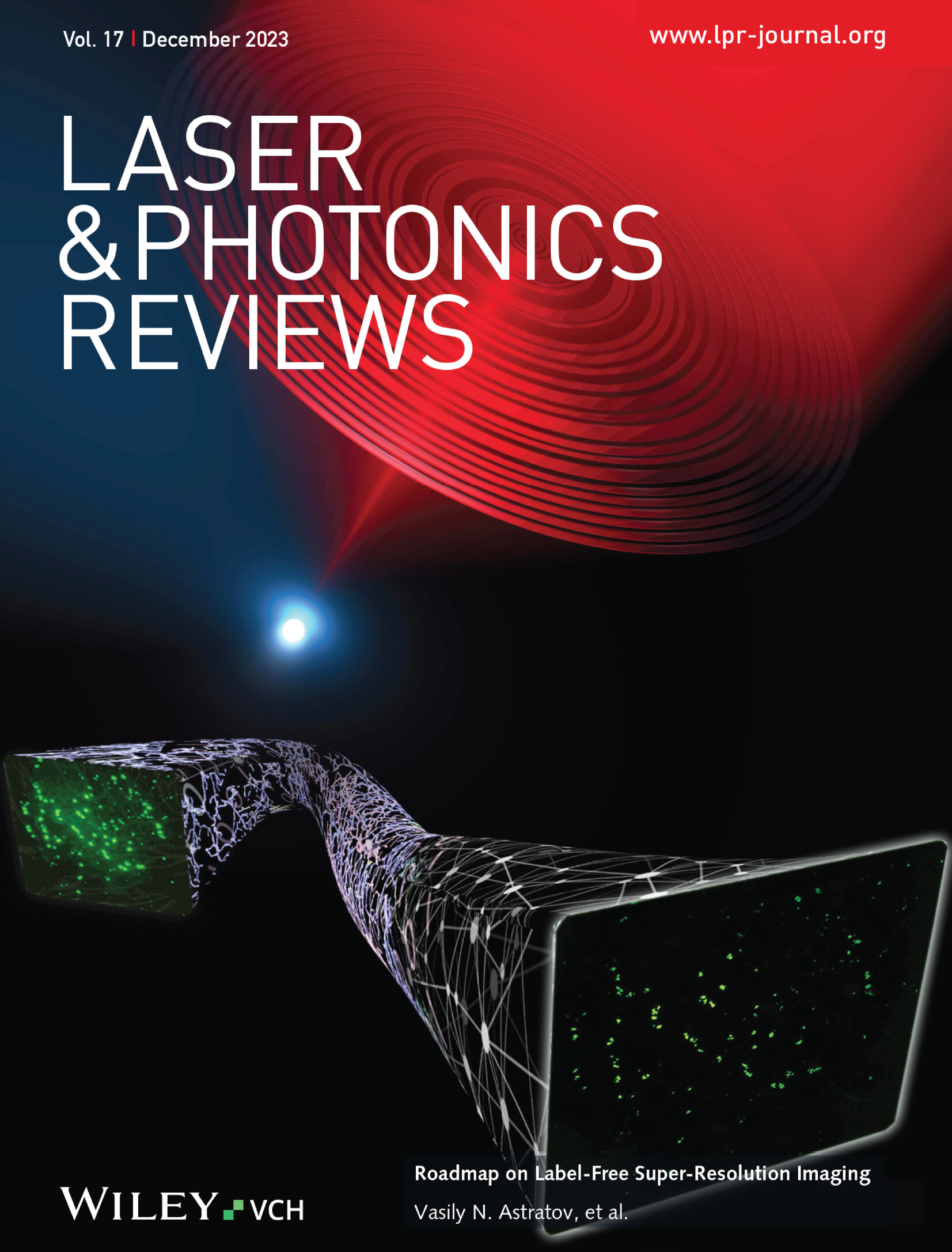悬浮铌酸锂纳米波导中的片上布里渊放大器
IF 9.8
1区 物理与天体物理
Q1 OPTICS
引用次数: 0
摘要
薄膜铌酸锂(TFLN)已经成为集成非线性光子学的领先材料平台,实现了宽带克尔孤子微梳和高速电光调制等变革性应用。虽然已经在TFLN中提出了受激布里渊散射,但由于要求器件同时具有低光学和机械损耗,因此获得足够的增益仍然具有挑战性。在这项工作中,考虑到铌酸锂中光弹性系数的各向异性,系统地表征了x切割膜悬浮TFLN纳米波导中布里温增益系数的角度依赖性。布里渊增益系数为129.5,并且通过泵频或芯片工作温度的变化进一步证明了布里渊频率调谐。基于悬浮TFLN纳米波导,通过优化光子和声子模式的约束,实现了具有8.5 dB创纪录高增益的布里渊放大器。这一结果不仅验证了利用悬浮TFLN纳米波导实现强引导布里渊相互作用的可行性,而且为新型片上传感和信号处理应用铺平了道路。本文章由计算机程序翻译,如有差异,请以英文原文为准。
On‐Chip Brillouin Amplifier in Suspended Lithium Niobate Nanowaveguides
Thin film lithium niobate (TFLN) has emerged as a leading material platform for integrated nonlinear photonics, enabling transformative applications such as broadband Kerr soliton microcomb and high‐speed electro‐optic modulation. While stimulated Brillouin scattering has been numerically proposed in TFLN, achieving sufficient gain remains challenging due to the requirement for the simultaneous low optical and mechanical losses of the device. In this work, the angle‐dependence of Brillouin gain coefficients in x‐cut membrane‐suspended TFLN nanowaveguides is systematically characterized, taking into account the anisotropy of the photoelastic coefficients in lithium niobate. A Brillouin gain coefficient of 129.5 is reported and the Brillouin frequency tuning is further demonstrated through variations in either pump frequency or chip operating temperature. Based on the suspended TFLN nanowaveguide, by optimizing the confinement of both photonic and phononic modes, a Brillouin amplifier with a record‐high gain of 8.5 dB is achieved. This result not only validates the feasibility of strong guided Brillouin interaction using suspended TFLN nanowaveguides, but also paves the way for novel on‐chip sensing and signal processing applications.
求助全文
通过发布文献求助,成功后即可免费获取论文全文。
去求助
来源期刊
CiteScore
14.20
自引率
5.50%
发文量
314
审稿时长
2 months
期刊介绍:
Laser & Photonics Reviews is a reputable journal that publishes high-quality Reviews, original Research Articles, and Perspectives in the field of photonics and optics. It covers both theoretical and experimental aspects, including recent groundbreaking research, specific advancements, and innovative applications.
As evidence of its impact and recognition, Laser & Photonics Reviews boasts a remarkable 2022 Impact Factor of 11.0, according to the Journal Citation Reports from Clarivate Analytics (2023). Moreover, it holds impressive rankings in the InCites Journal Citation Reports: in 2021, it was ranked 6th out of 101 in the field of Optics, 15th out of 161 in Applied Physics, and 12th out of 69 in Condensed Matter Physics.
The journal uses the ISSN numbers 1863-8880 for print and 1863-8899 for online publications.

 求助内容:
求助内容: 应助结果提醒方式:
应助结果提醒方式:


